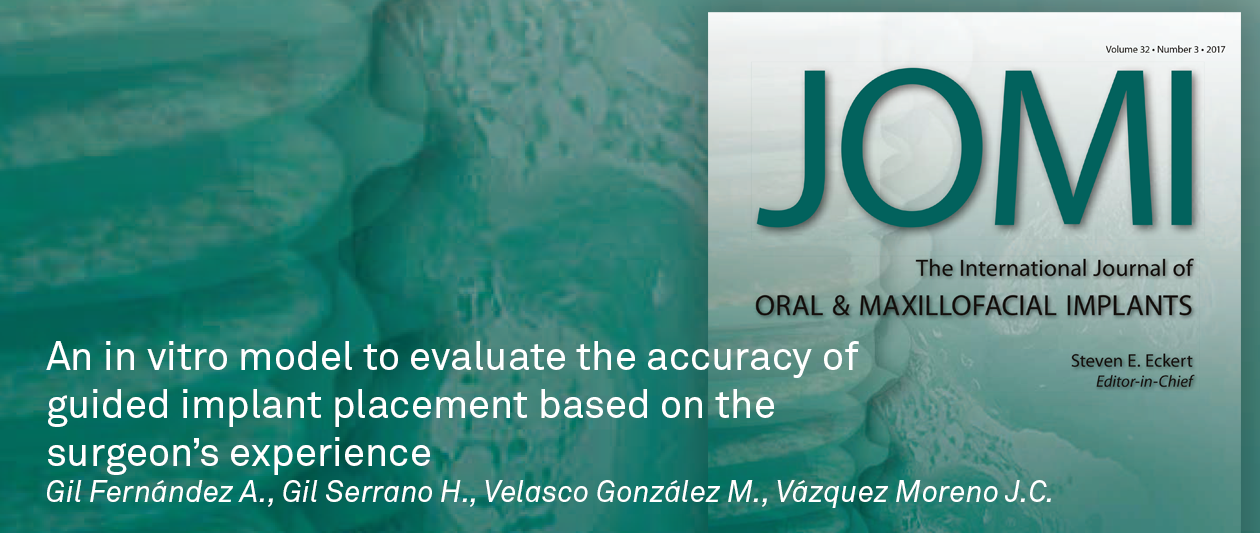Gil Fernández A, Gil Serrano H, Velasco González M, Vázquez Moreno JC
INT J ORAL MAXILLOFAC IMPLANTS 2017;32:515-524. doi: 10.11607/jomi.5024
Fifteen doctors were involved in the study and were divided into three groups based on experience level (expert, intermediate, novice). After taking the pre-operative CBCT images and realizing the stereolithographic guides, each clinician has planned the insertion of 6 Outlink
2 implants in 5 identical mandible models with the EchoPlan guided surgery kit, using an implant planning software.
After the implants were placed in each mandible, a post-operative CBCT scan was taken, and the images were superimposed to the pre-operative images.
With the purpose of analyzing the accuracy of insertion of the three groups involved in the study, three measurements were made: platform deviation, apex deviation and angle deviation.
Statistically significant differences were found between group I (expert) and group III (novice) in the implant angle (even if minimal, only 0.4 degrees), while significant differences were not found between the groups with regards to platform and apex position.
These results confirm that guided surgery is an affordable and predictable protocol, which represents an excellent support for the less-experienced clinicians; however, as demonstrated in this interesting study, a good experience level represents the ideal condition for a proper and accurate implant surgery.
Read the abstract 

